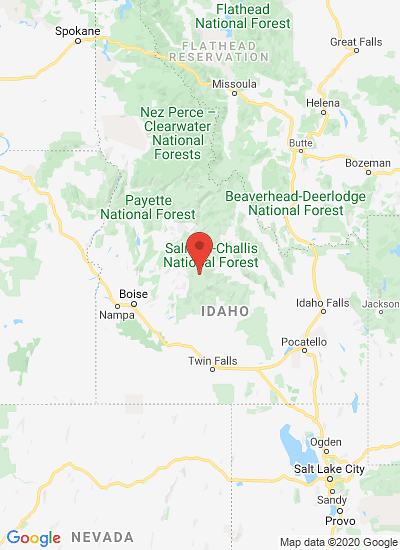Eagle Eye says Idaho potato crop showing high quality but smaller sizing.
Eagle Eye says Idaho potato crop showing high quality but smaller sizing

Eagle Eye Produce had been harvesting new crop potatoes for several weeks before beginning harvest for its storage supplies the week after Labor Day. While it is still too early to know the overall projection for the crop, early indications are for high-quality spuds with smaller overall sizing and a bit lower yield.
Coleman Oswald, director of sales for Eagle Eye, based in Idaho Falls, ID, said that in a typical season, harvest for new crop supplies begins in early August and runs for around 45 days. Then, harvest for storage supplies takes over mid-September and runs until the first week of October.
This year, however, growers started harvest around two weeks late, which put added pressure on the market since storage supplies from the previous year were all but tapped out.
As a result, prices spiked amid strong demand, with 10-pound bags of russets commanding up to USD 12.99 at retail. Oswald said the main culprit behind the late start was a cold and wet spring, which delayed the growing cycle.
Coleman Oswald:
Coleman Oswald:
Coleman Oswald:
Coleman Oswald:
Coleman Oswald:
Coleman Oswald:
Coleman Oswald:
Coleman Oswald, director of sales for Eagle Eye, based in Idaho Falls, ID, said that in a typical season, harvest for new crop supplies begins in early August and runs for around 45 days. Then, harvest for storage supplies takes over mid-September and runs until the first week of October.
This year, however, growers started harvest around two weeks late, which put added pressure on the market since storage supplies from the previous year were all but tapped out.
As a result, prices spiked amid strong demand, with 10-pound bags of russets commanding up to USD 12.99 at retail. Oswald said the main culprit behind the late start was a cold and wet spring, which delayed the growing cycle.
Coleman Oswald:
"Plants took a bit longer to get started but once the heat kicked in, the growing conditions were excellent and plant health looks to be great."That cold and wet spring also resulted in the smaller sizing profile for this year’s Idaho potato crop, again due to the delayed growing cycle.
Coleman Oswald:
"The spuds didn’t have time to bulk up and that also is contributing to a lower yield"Oswald admitted that the overall picture of the crop would not be clear for another four weeks or so, when harvest of the storage crop winds down.
Coleman Oswald:
"The large majority of potatoes for the year is harvested in a four-week period, and at this point, they are still in the ground."The upside to what he is seeing, however, is that there won’t be a glut of potatoes, and markets should remain very active with favorable pricing.
Coleman Oswald:
"Overall, there were around 8-10 percent fewer acres planted in the state [of Idaho] this year due to water restrictions and the high input costs. Basically, growers were being more cautious about how much they planted this year, which is a good thing."Eagle Eye didn’t cut acreage this year, however, and in fact increased acreage on its yellow and red potatoes due to consumer demand, according to Oswald.
Coleman Oswald:
"We’re very much looking forward to another strong year for our colored potato program. Demand on yellows has really picked up the last few years, and we have also noticed a bit of an increase on the reds as well."Eagle Eye is also very active in the export market, and Mexico is one country that offers tantalizing potential, especially this year.
Coleman Oswald:
"For one thing, we now have the ability to ship beyond the 26-kilometer border zone into the interior of the country, so we are super excited to expand our shipments to Mexico."Overall, Oswald said he is looking forward to a return to normalcy with the potato market.
"Additionally, unlike the United States, there is a lot of demand for smaller sizes in Mexico, so that works well with our crop profile this year, especially since we are only permitted to ship 20-pound units or smaller."
Coleman Oswald:
"We’re coming through a very chaotic time with markets at an all-time high. We were a bit surprised that supplies were so short so late, with growing conditions playing a major role in that."
"We hope that the industry can manage this new crop in a manner that allows more consistent product for our customers throughout the year and do the best that we can with what Mother Nature deals us."
Like to receive news like this by email? Join and Subscribe!
Get the latest potato industry news straight to your WhatsApp. Join the PotatoPro WhatsApp Community!
Uitgelichte Bedrijven
Sponsored Content
Sponsored Content
Sponsored Content
Sponsored Content







